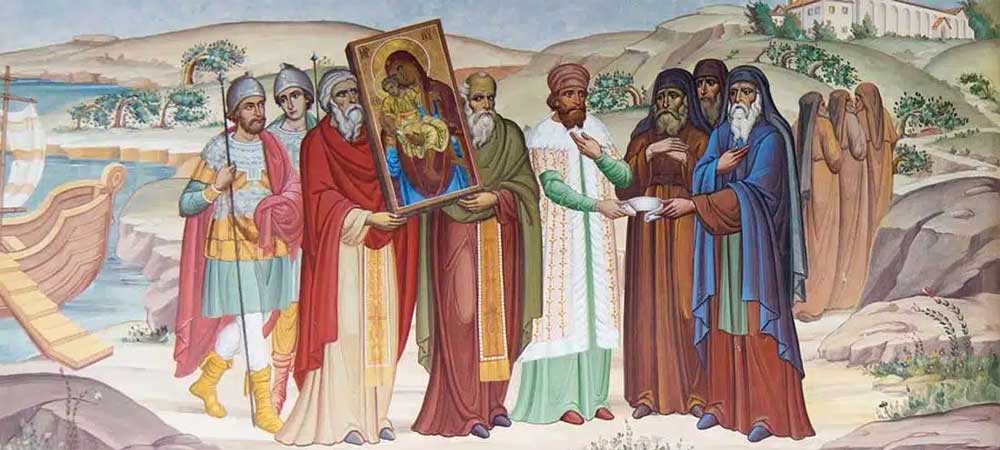Life and Martyrdom of Saint Lucia
 Saint Lucia came from Syracuse, Sicily and was martyred in the year 304 AD. when Pashasios was ruler of Sicily and Diocletian was emperor of Rome.
Saint Lucia came from Syracuse, Sicily and was martyred in the year 304 AD. when Pashasios was ruler of Sicily and Diocletian was emperor of Rome.
She broke off her engagement to a man who refused to convert to the Christian faith. The man then had her arrested, and she was decapitated for her faith.
The name Lucy, means lucid, bright. In Greek it the equivalent is Foteini.
Her mother, Eutychia, suffered from chronic bleeding and thus she was forced to take refuge with her in Catania to the temple of the miracle worker Saint Agatha so that Eutychia could be cured. There she saw in her sleep Saint Agathi who assured her that her mother would be cured and that she herself would meet a martyr’s end.
After her mother’s health was restored, Saint Lucia distributed her property to the poor and awaited her end in prayer according to the words of Saint Agatha. Her insistence on the original faith and her general attitude was the reason her suitor moved against her.
She did not even hesitate to denounce her to the ruler Pashasios as a Christian. After his interrogation, he ordered her to be locked up in a common house to humiliate her. And yet a divine power kept her motionless where she was, although at first the soldiers pulled her with a rush, and then they tied her to a yoke drawn by many pairs of oxen. The soldiers, angry that they did not achieve their goal, anointed her with tar, resin and oil and set her on fire to burn alive; however, it was divine intervention that extinguished the fire.
Then they gouged out her eyes with a saber and a soldier plunged his knife into her throat and left her bleeding. The Saint asked to partake of the Immaculate Mysteries and thus provided, she surrendered her soul to the Lord after having previously prophesied about the short end of idolatry and the victory and predominance of Christianity.
In 886 AD Saint Leo, Bishop of Katani, built a walled church in her honor at his own expense. Her holy tabernacle, indestructible and fragrant, was transported to Constantinople where it remained until 1204 AD. so the crusaders took it to Venice in the year 1280 AD. From 1860 AD it is kept and worshiped in the church of Saints Jeremiah and Lucia. In 1955 AD her carapace was covered with elaborate inlay of hammered silver in the shape of a head.
Saint Lucia in the iconography is shown holding a palm branch and a plaque with eyes to remember her martyrdom.
Her name in Latin comes from lux-lucis which means light and by extension means Bright. Its feast twelve days before Christmas heralds the light that comes into the world with the birth of the God-man. All of Europe celebrates this day.
In Sweden, a little girl wears a crown with lit candles on her head and carries two lighted candles. Accompanied by other girls dressed in white, she pretends to be Saint Loukia who brings the light of Christmas.
They visit the houses and sing the carols of St. Lucia. For Palermo in Sicily, her memory is a day of fasting during which they catalyze a single small piece of chickpea flour (panelle) for the Saint to protect their eyes.
St. Lucia whose eyes were mined “lent” to the newer 20th century iconography in St. Paraskevi the sign with the eyes to remind us that she healed the eyes of King Antoninus.
According to old tradition, Saint Lucia was revered as the protector of the eyes.
Before she died she predicted the coming death of the emperor. She is considered the patron saint of the blind, farmers, repentant prostitutes and is believed to help people with eye diseases.
Orthodox nameday: 13/12
